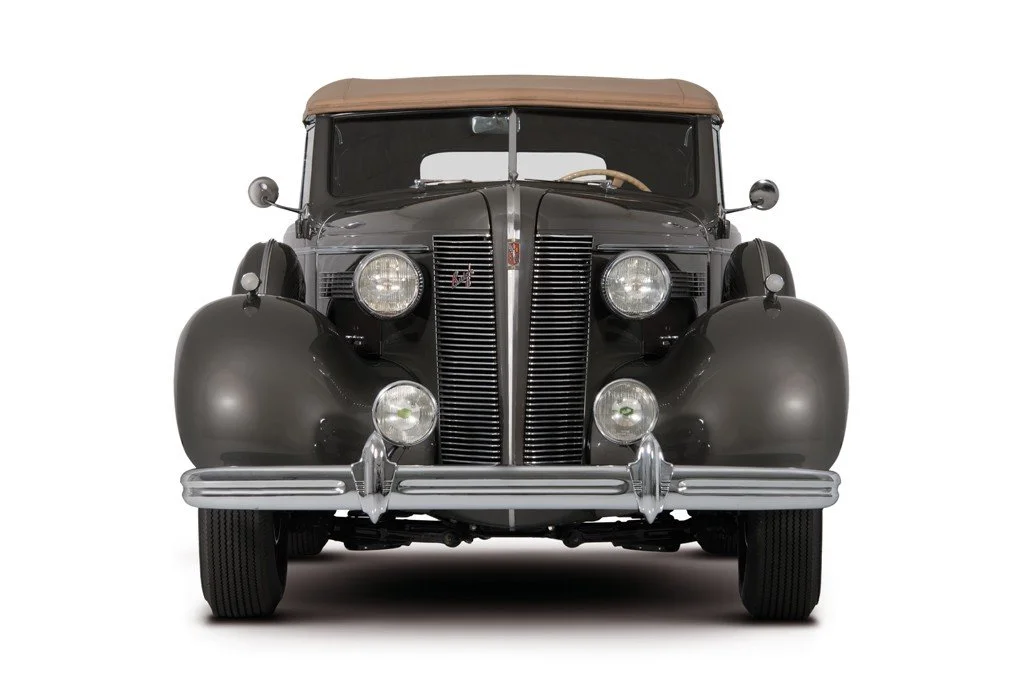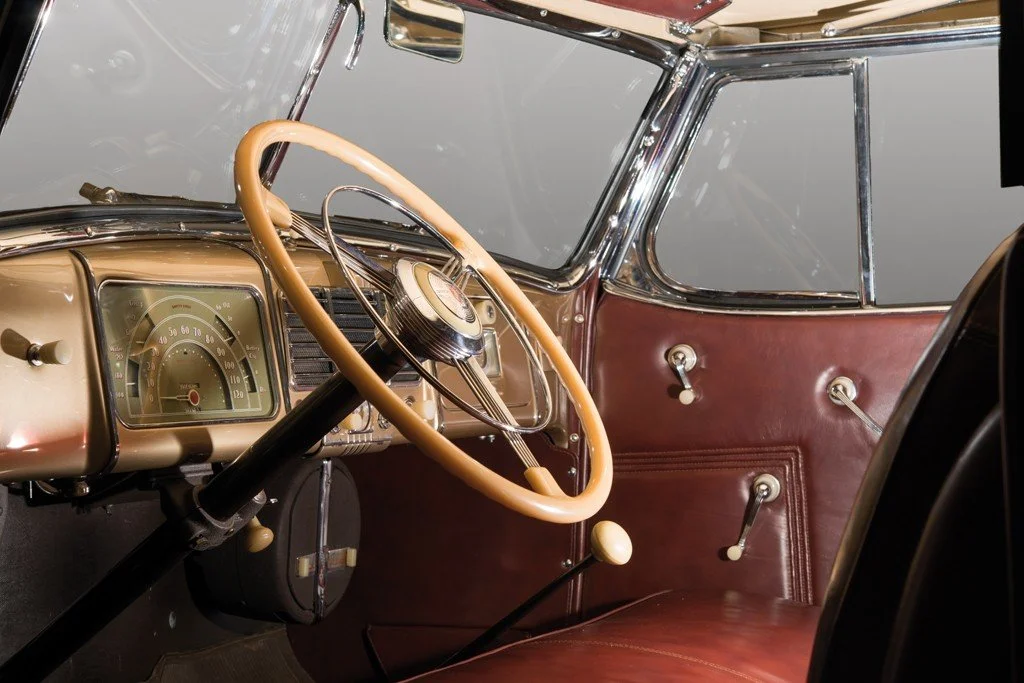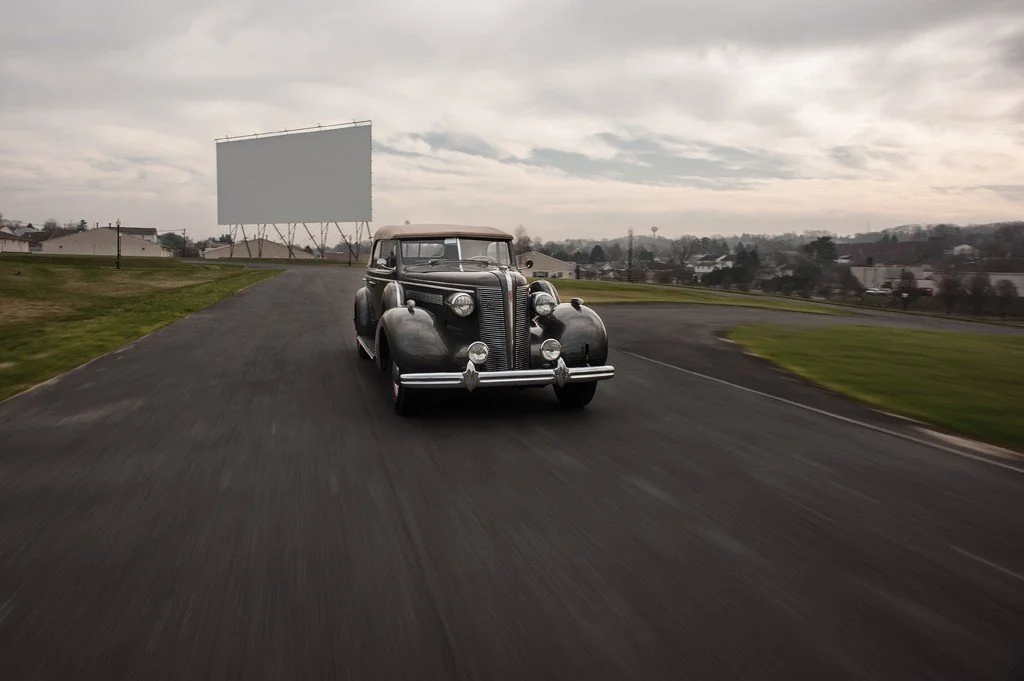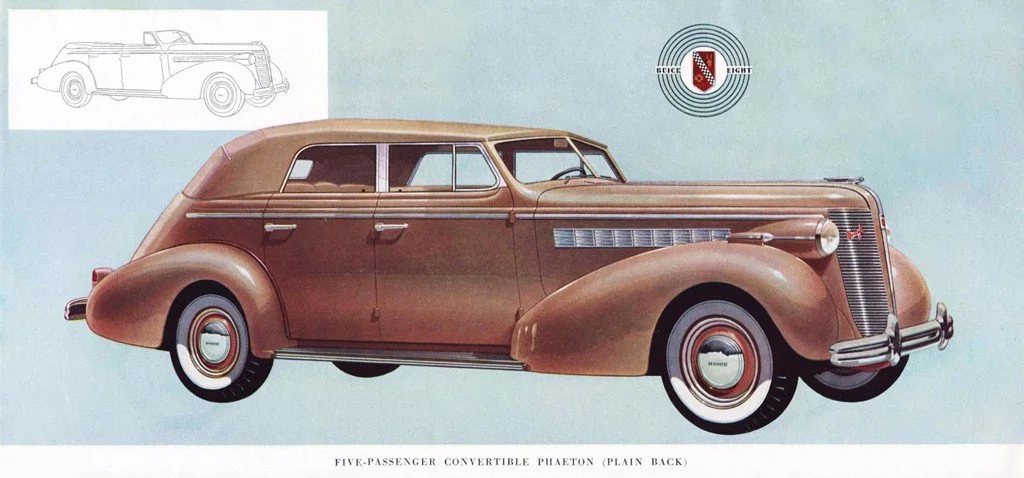-
The 1937 Roadmaster looked completely different from the previous year’s model, thanks to the new front fenders, grille, hood and headlights. The body-shell remained the same, and was also used by Cadillac and Oldsmobile. On the inside, the instrument panel was completely redesigned, with the gauges directly in front of the driver, the radio in the middle and the glove box in front of the passenger. The engine was more powerful, with top speeds in the 100 miles per hour range, and acceleration from zero to sixty miles per hour in 20 or so seconds, a good result for such a heavy car. The Roadmaster line continued to have a good sales success, thanks to the great value for the features offered.
This rare Model 80C Convertible Phaeton was purchased by the Nicola Bulgari Car Collection in 2014 as a completely restored car. The previous owner had completely restored the car in its proper colors and fittings, and upon joining the collection it was subjected to a full mechanical service by Precision Motor Cars in Allentown. -
Company
General MotorsWheelbase
131inInterior trim
Dark red leatherBrakes
front and rear drumsMake
BuickLength
208inEngine
inline 8 - 320cidTires
7.00x16Model
Roadmaster - Model 80CWidth
78inCarburetor
1 StrombergOriginal Price
$1,856Body style
4-door Convertible PhaetonWeight
4,214lbsHorsepower
130hp @ 3400rpmProduction
1,040Model year
1937Exterior paint
Silver GreyTransmission
Synchro-shift 3-speed manual -
When Harold Curtice was appointed head of the Buick Division in 1933, he found an ailing company with obsolete engineering and outdated styling. Sales had plummeted since the 1928 record year, and Buick was now struggling to keep its eighth place in the sales rankings. Curtice began reorganizing the Company, starting from the most obvious problems, like the sales structure, shared with Pontiac and Oldsmobile, and the proliferation of body types and engines, all without common parts that could be shared between the various models of the line-up. The 1934 and 1935 models were already set up and ready for production, so the real revolution began in 1936. One of Curtice’s first moves was to introduce real names in place of the numbers that identified the series. Series 40 became the Special, Series 60 became the Century and Series 90 became the Limited. Mechanically, engineers Harold Youngren and John Dolza were given the task to completely redesign the power plants, introducing two new engines in place of the five available in the past. General Motors head of styling Harley Earl was responsible for completely redesigning the new Buick bodies for 1936. For the first time at GM, the bodied were completely made of steel, doing away with wood for structural purposes. The small Special and Century body was shared with Pontiac, Oldsmobile and Chevrolet, while the large series had their body in common with Cadillac. 1936 saw the introduction of a long-lived series, the Roadmaster, a model that would become a mainstay of Buick until 1958, and was reintroduced in 1992 for the top-of-the-line cars. This series used a 131 inch wheelbase, just a few inches shorter than the Limited, and was powered by the new 320 cubic inch straight-eight that would remain in production until 1952 with the same displacement. The power would increase from the original 120 horsepower to 170 in the last years. Some noteworthy points of interest in the 1936 Buick line-up were the introduction of four-wheel hydraulic brakes and a new three-speed transmission, which remained in production even after the introduction of the automatic transmission in the late forties. Sales results were very good, with almost 180,000 cars sold in 1936, good for sixth place in the production charts.
Having totally restyled its entire line for 1936, Buick might have been expected to relax a bit during 1937. But the division had been through a rough period falling from third place in 1926 to eighth in 1933, so it had some catching up to do. By 1936, Buick had moved back into sixth place, but that wasn’t good enough for general manager Harlow Curtice, and the 1937 line was restyled once more. If the 1936 models were attractive, the new ones looked even better. New fenders, hood, grille and headlights gave the 1937 Buick a completely new look, even if the body was roughly the same as in 1936. The 320 straight-eight engine was fitted with a new camshaft, full pressure lubrication and a new “Aerobat” carburetor, which improved acceleration and speed, boosting horsepower to 130. Sales were very good, with a total of over 227,000 cars sold in 1937 and a market share of 5.8%. Buick remained in sixth place in the sales charts, but at least the future was looking very promising.















